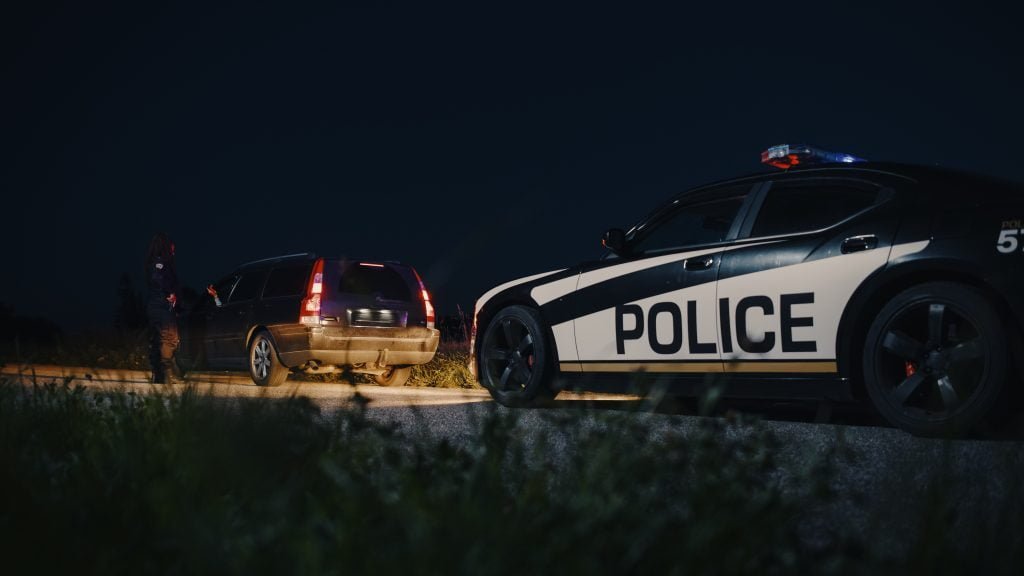Driving through the picturesque landscapes of Utah, you might wonder about the state’s laws, particularly those concerning vehicle window tinting. It’s a question that’s often asked: can a cop pull you over for tint in Utah?
This article will delve into the specifics of Utah’s window tint laws, offering a clear understanding for motorists. Whether you’re a resident or just passing through, it’s crucial to be aware of these regulations. Stay tuned as we navigate through the ins and outs of Utah’s tint laws, potentially saving you from an unwelcome encounter with law enforcement.
Understanding Utah’s Tint Law
The Legal Limit for Window Tinting in Utah
According to Utah State Legislature, passenger vehicles are subjected to certain restrictions in terms of window tinting. Law stipulates that the windshield may have non-reflective tint located above the manufacturer’s AS-1 line. As for front side windows, the net light transmittance must not be less than 35%. This signifies that no less than 35% of light should penetrate through the tinted windows. For rear windows, tinting is unrestricted, conditional upon the vehicle having left and right-hand mirrors.
Consequences of Violating the Tint Law
An individual found guilty of violating the tint law in Utah can face serious repercussions. The offense is typically sanctioned as a ‘fix-it’ ticket, giving the violator an opportunity to correct the problem. However, if the situation persists after an initial warning, the individual may receive a ‘correctable violation’ citation under the Utah Traffic Code (Title 41, Chapter 3). This citation carries a fine that can range from $70 to $100. Furthermore, blatant disregard for the tint restrictions is deemed a Class C misdemeanor, which could result in more stringent penalties, including higher fines or even jail time.
Can a Cop Pull You Over for Tint in Utah?

Utah’s window tint laws are precise and law enforcement does exercise their authority to enforce these rules.
Probable Cause and Window Tint Violations
In Utah, a police officer requires a reason, aka probable cause, to initiate a traffic stop. A window tint violation serves as valid probable cause. If an officer suspects a vehicle’s window tinting exceeds Utah’s legal limits, he or she’s justified in stopping the vehicle. Just for illustrative purposes, an officer doesn’t need a tint meter to determine if the tint is too dark. If it appears excessively dark from a visual assessment, that’s sufficient for a traffic stop.
Traffic Stops for Window Tints
During a traffic stop prompted by suspected window tint violation, it’s typical for the officer to use a tint meter to confirm the precise shading. If the readings go beyond the statutory limits – 35% for front side windows – the officer can issue a citation for non-compliance with Utah’s tint laws. The vehicle owner then has a prescribed period, generally within 14 days, to rectify the violation and evince proof to avoid further penalties.
Assessing the Legality of Tinted Windows in Utah
Taking small, proactive measures allows drivers to ensure their window tint abides by Utah’s laws. Firstly, consider professional installation, as they’re up-to-date with state laws. Secondly, conduct routine checks for any variation in tint darkness. A tool, known as a tint meter, accurately measures tint levels. Thirdly, Utah legislation provides an allowance of +3% tolerance on the prescribed tint regulation (24% for front side windows). Finally, if pulled over, cooperation with law enforcement assists in a quick resolution of the discrepancy.
How to Avoid Legal Issues with Window Tint in Utah
Knowing the local laws, regularly checking tint darkness levels, and opting for professional installation are the prime methods drivers in Utah use to ensure their vehicles comply with tint regulations.
Conclusion
Understanding and adhering to Utah’s window tint laws is crucial for every driver. Not only does it help avoid fines and potential misdemeanor charges, but it also contributes to maintaining safe road conditions. Regular checks on tint darkness and understanding VLT values are key to staying within the law. Opting for professional installation of window tint and the use of tint meters can further ensure compliance. So, can a cop pull you over for tint in Utah? Yes, they can and they will, if your vehicle’s window tint doesn’t comply with the state laws. Stay informed, stay compliant, and contribute to safer roads in Utah.
FAQS
What are Utah’s window tint laws?
Utah’s window tint laws mainly focus on the permissible tint percentages and shades for different vehicle windows. These laws maintain optimal visibility and promote safe driving practices.
What are the consequences of violating these window tint laws?
Violating Utah’s window tint laws may result in fines and potential misdemeanor charges. Therefore, to avoid legal complications, it’s crucial for drivers to comply with these laws.
How can I ensure my vehicle’s tint complies with Utah’s laws?
Compliance can be ensured by understanding Visible Light Transmission (VLT) values, regular monitoring of tint darkness, seeking professional installation, and using tint meters.
How does law enforcement inspect for window tint violations?
Enforcement is carried out by law enforcement officers on the road. They utilize tint meters to measure the tint’s darkness and confirm if it’s within the allowable limits set by the law.
Why is it important to comply with these laws?
Adherence to these laws not only helps drivers avoid legal issues, but it also contributes to safer road conditions by ensuring optimal visibility for all road users.


